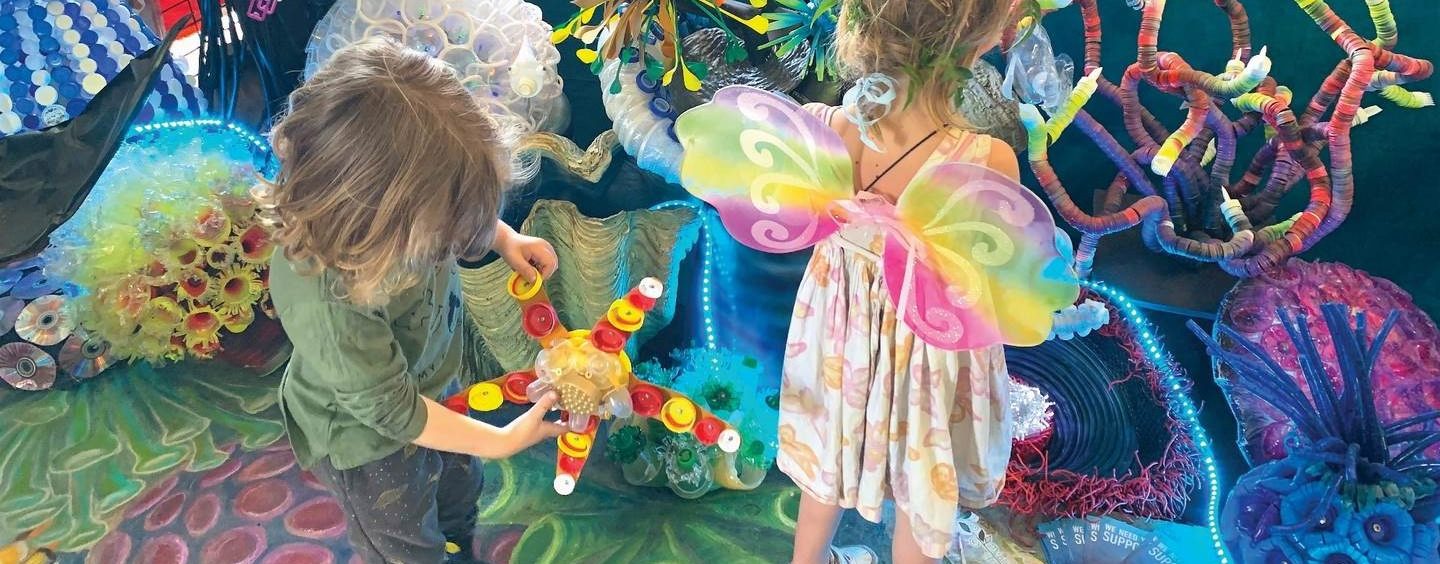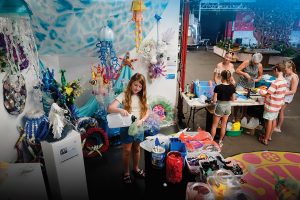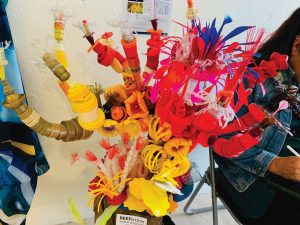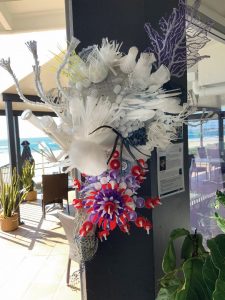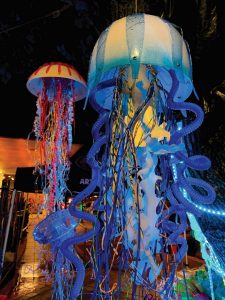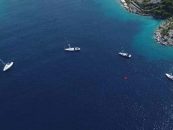REPLICATE A WONDERLAND OF CORALS & OCEAN CREATURES
By Roselle Tenefrancia
The cliche, “One person’s trash is another one’s treasure” is finding deeper meaning in many artists who are making art out of things discarded on a daily basis. Not only do they find the “treasure” by making art, they also find the value of creating a statement and educating the community about the impact of waste in our everyday lives.
Amelia Batchelor, known in the arts world as Mealie, is a multidisciplinary artist, working with an array of different media. Her sculpture works are predominantly created with vintage and bespoke items, recycled and discarded materials. “I have numerous strange and bizarre collections that help me create unique and engaging artworks, you could say, with a thoughtfulness for nature and a magical curiosity.”
Mealie’s latest sculptural work is titled, ‘REEFlection’. It is a series of sculptural elements made of ordinary, everyday plastic items, collected, found and rescued from waste bins and the environment, that replicate a wonderland of corals and ocean creatures. The entire installation has been exhibited at over 10 different venues and festivals.
Community engagement and education is at the forefront of Mealie’s sculpture work. “Watching children and adults recognise the intricate elements that exist in our daily lives, and seeing the delight and wonder on their faces while exploring and interacting with the sculpture and then the appreciation of the overall message of the work, have been the integral mission of my art and a life-long dream as an artist to develop and produce.”
Mealie began engaging in recycled art a while back. “I submitted a conservation-based application for an exhibition in a highly renowned Melbourne gallery. The research and design of this work took me on a journey of discovering how birds and wildlife were becoming endangered by waste and habitat destruction due to human intervention. I created two artworks that were quite unsettling for people to look at in regards to what they stood for, and this was a time when the awareness of the plastic problem was not media mainstream as it is now.”
From there, she was hooked on the importance of making people think about this type of art and the possibility of making some kind of change. “Hopefully, it will provide people a space to reflect on their own behaviour and relationship to material that they come across in their daily lives.”
Although she lives on the Northern Rivers, Mealie offers her art and creativity to the Gold Coast community. “Over the past few years, I have fostered great relationships with schools, businesses and Council with the creative and educational work I do. One of these is to be working on the City of Gold Coast Council’s Our Beaches Program with creative ideas and workshops.”
In sourcing out the materials for her art, Mealie engages with her own community of family, friends, business owners and neighbours who collect relevant found objects or plastic items meant to be discarded, and deliver to her. She has set up her ‘Mealie-Bins’ in cafes in her town that collect milk tops, and the locals have been adding to the collection bins.
“I don’t live near a beach to do regular ‘beach clean-ups’ but I do walk and clean-up local streets when I can – even rubbish in the country towns and cities can end up in our waterways, and ultimately in our oceans! I also sometimes take my kayak out on the Tweed River or Gold Coast waterways, and pick up any trash that I see.”
One of Mealie’s works, called “Bleached”, is a piece completely made from recycled and discarded plastic waste. “It is delicate and beautiful, has a powerful message, and started with me finding a large piece of styrofoam floating way upstream on the Tweed River. It is a replicated coral cluster that has been devoured by the crown-of-thorns starfish (also known as COTS), one of the largest starfishes in the world, and most common in Australia. Research has revealed COTS are a major cause of coral loss on the Great Barrier Reef, after coral bleaching.”
Most of Mealie’s work is researched and documented with posters and facts that are displayed with the work.
The use of found and recycled items for art is something that Mealie encourages. “Being conscious of where your materials come from, how they are made, and how you dispose of your waste, is very important, not just for artists, but for every person and every living thing. We are all responsible for our planet’s care.”
Know more about Mealie and her art at www.mealieart.com or on Instagram @mealieart
Published in print July-September 2022




















